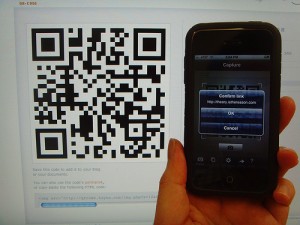Last weekend I was planting some seeds in my garden. Believe it or not, the seed package had a QR code on it. Even more unbelievable is that I had my smart phone with me so I scanned it to see what it would take me to.
 It was a site that provided information about the plant, as well as care and harvesting tips. My curiosity had gotten the best of me.
It was a site that provided information about the plant, as well as care and harvesting tips. My curiosity had gotten the best of me.
Curiosity is exactly why 46 percent of people who have used QR codes did so, according to eMarketer. Other reasons include to get more information (41%); to take advantage of a discount/coupon/ free gift (18%); to gain access to exclusive content (16%) or to buy something (6%).
Just last week I was at a store and it had a QR code on a promotional flyer. By scanning it, I received a coupon for 25 percent off one item. It was worth it!
I still don’t make it a habit of using QR codes, but they definitely have an appeal. When do you use them?


